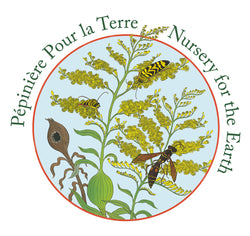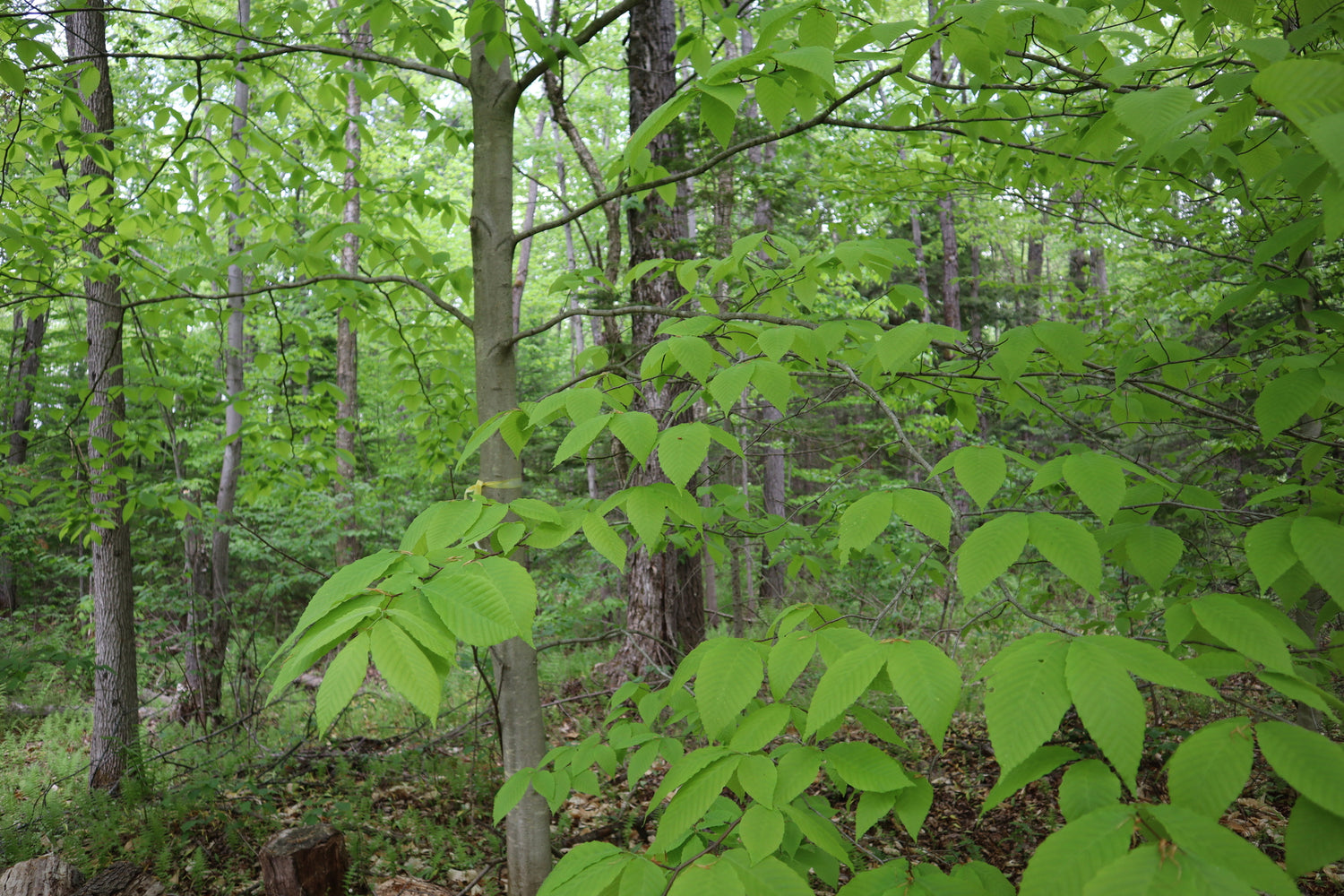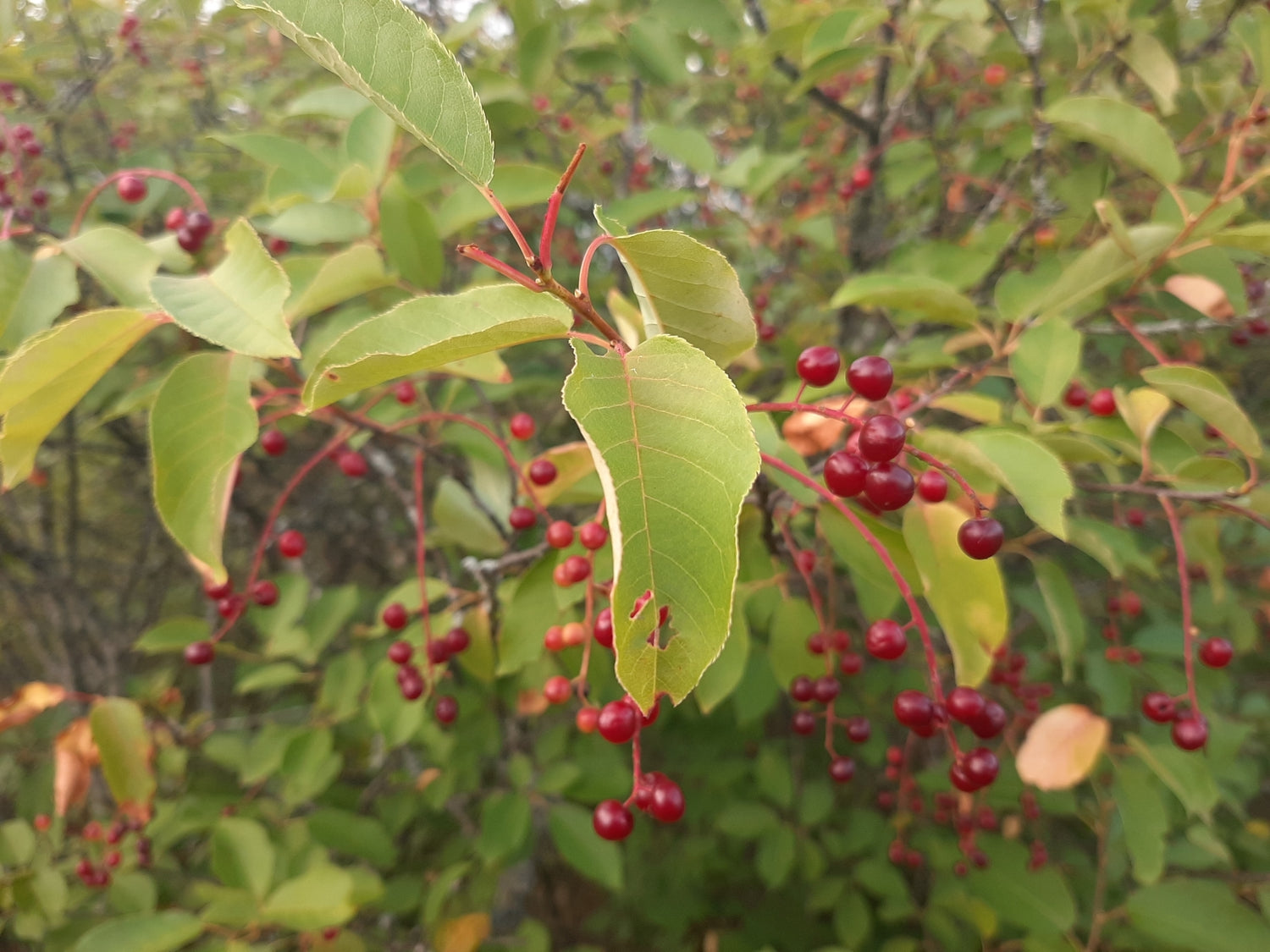Nursery for the Earth
Prunus virginiana (Fr: cerisier de Virginie | En: Chokecherry)
Couldn't load pickup availability
Chokecherry
Prunus virginiana var. virginiana
Alternative names: Virginia Chokecherry, Eastern Chokecherry
French: Cerisier de Virginie
Chokecherry is one of the most widespread and ecologically valuable native shrubs in eastern Canada. It grows as a large shrub or small tree and plays a vital role in local ecosystems. Its leaves host a remarkable diversity of butterflies and moths, whose larvae feed on the foliage and, like monarchs on milkweed, sequester toxic compounds found in all Prunus species for protection.
In early spring, it produces fragrant, white flower clusters that attract pollinators. Later in the season, the small blackish-red berries ripen. Though naturally astringent (hence the name "choke" cherry), the fruit can be made into delicious jellies and syrups with a bit of sugar. As with other cherry relatives, the pits should not be consumed.
Chokecherry is often confused with the invasive Bird Cherry (Prunus padus), which is spreading in urban and disturbed areas. While the two are difficult to distinguish without a close look at the flowers, the native species has a beautiful and distinctive trait: its foliage often turns bright red and orange as early as August, well ahead of most other species.
This plant is an excellent native alternative to non-native shrubs such as lilacs or bridal wreath spirea.
Height: 2–5 m
Bloom time: Spring
Light: Part shade to full sun
Moisture: Dry to moist
Soil: Adaptable to various soil types
Habitat: Forest edges, open habitats, roadsides
Ecological benefits: Host plant for butterflies and moths, bird food, pollinator-friendly
Edible: Berries (best cooked, pits not edible)
Share









